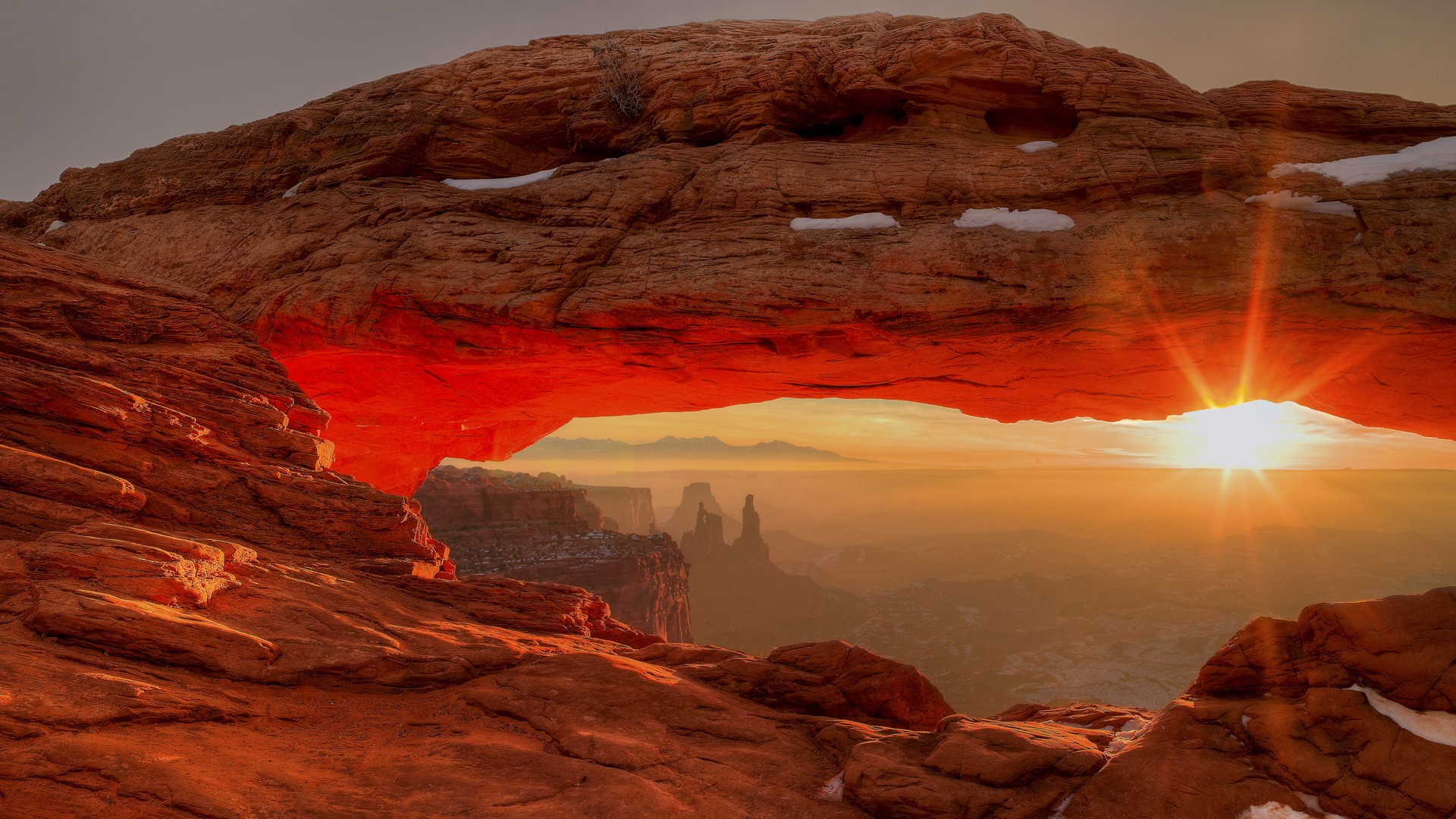FEATURED PHOTO: Mesa Arch in Canyonlands National Park. SOURCE: Utah.com
This week, Road Trips with Tom heads to some of the wildest, most colorful, most spectacular real estate in North America – the canyon country of southeastern Utah. This is a land where nature has sculpted dramatic and fanciful works of layered stone – mesas, buttes, plateaus, hoodoos, arches and deep canyons in colors ranging from red to pink to orange to ochre to white and black. At its heart are the Colorado River and its major tributaries, the Green and the San Juan.
The canyon country is a sparsely populated land offering some of the best hiking, sightseeing, auto touring, backpacking, river running, mountain biking, four-wheeling and photography you’ll find anywhere. It attracts visitors from around the world.
For North Americans, it’s one of the very best road trip destinations – one that’s worthy of multiple visits. If your home is too far away for an all-driving trip, you an easily fly to Las Vegas or Salt Lake City and explore in a rental car.
Either way, be sure to put this region on your bucket list. It’s one of North America’s finest, most satisfying road trip destinations.
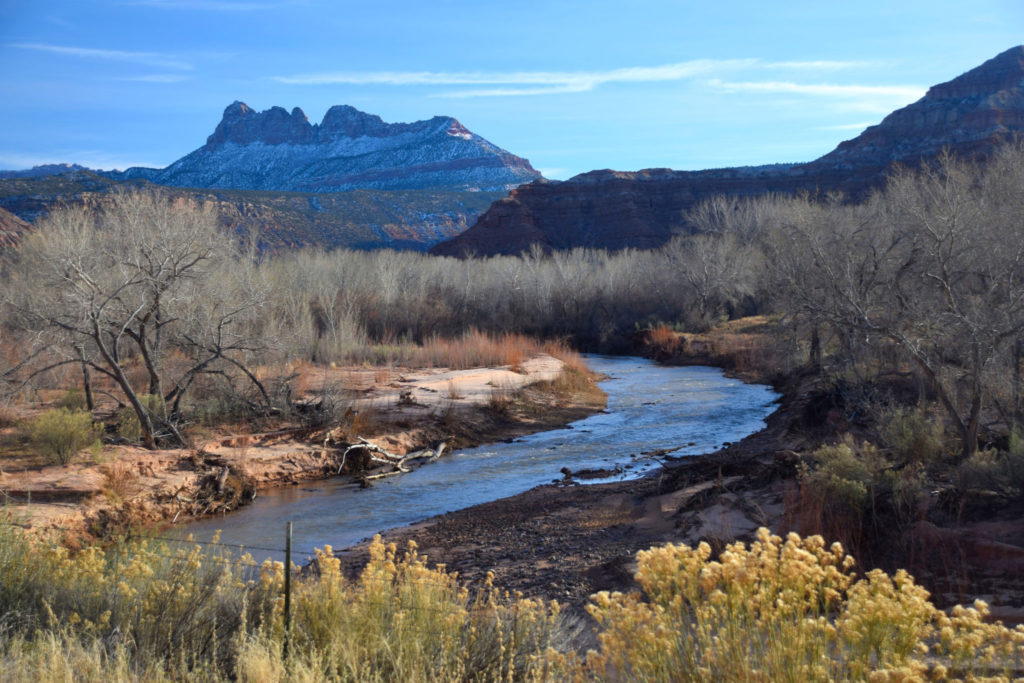
Five Utah national parks
I’ve had the good fortune to visit and explore every U.S. state except Hawaii and all but one of Canada’s provinces. This is my favorite destination. Since my days as a travel writer with AAA, I’ve had a lifelong love affair with the Four Corners region of Utah, Colorado, New Mexico and Arizona.
Specifically, we’ll visit Utah’s five amazing national parks: Arches, Bryce Canyon, Canyonlands, Capitol Reef and Zion. My goal isn’t to provide a detailed planning tool. Instead, I’ll offer capsule descriptions of each park, along with some general guidance to help you plan a visit.
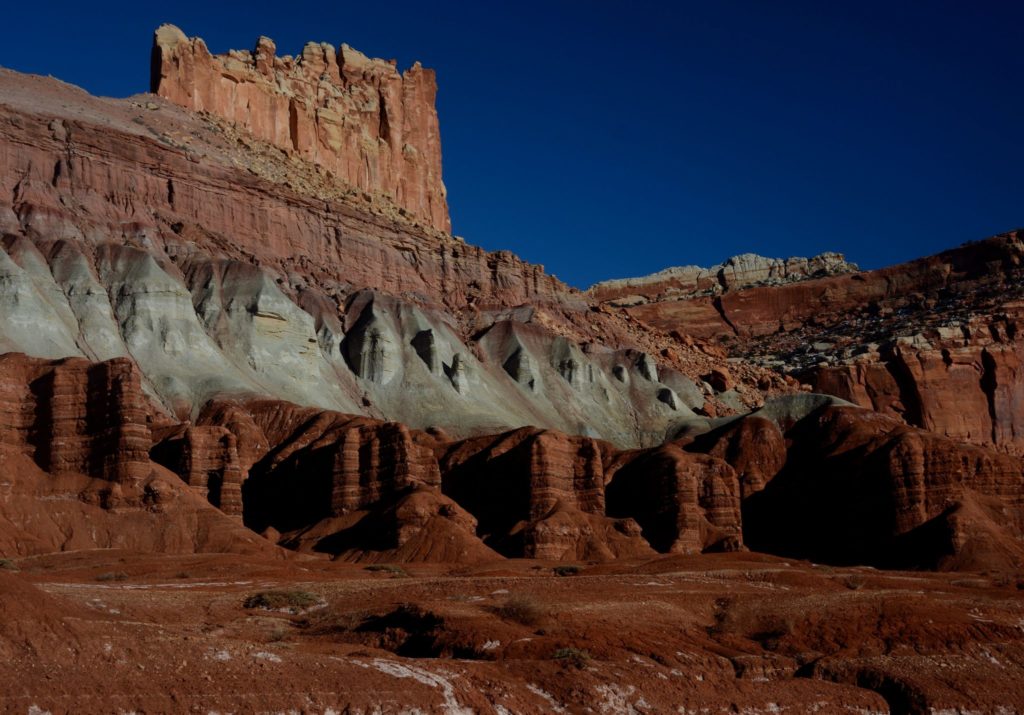
There’s way too much for one post, so I’ve divided it into three. In this one, I’ll introduce the canyon country and offer up some admittedly biased guidance based on my own experience and preferences.
Part Two, which will be published January 1, will focus on Zion and Bryce Canyon National Parks. Then, on January 15, we’ll visit Capitol Reef, Canyonlands and Arches. This isn’t an arbitrary division. Rather it goes from the nearest park to my home in the Los Angeles area to the most distant.
When to visit the canyon country
The timing of your trip depends on three factors: When you can get away, the weather, and other visitors.
Southeastern Utah is a desert. Elevations range mostly from 3,000 to 7,000 feet, with isolated mountain ranges that reach over 10,000 feet. It doesn’t rain much, although summer thunderstorms can bring flash floods. Summers are hot. Winters can be cold. Spring and fall bring moderate temperatures.
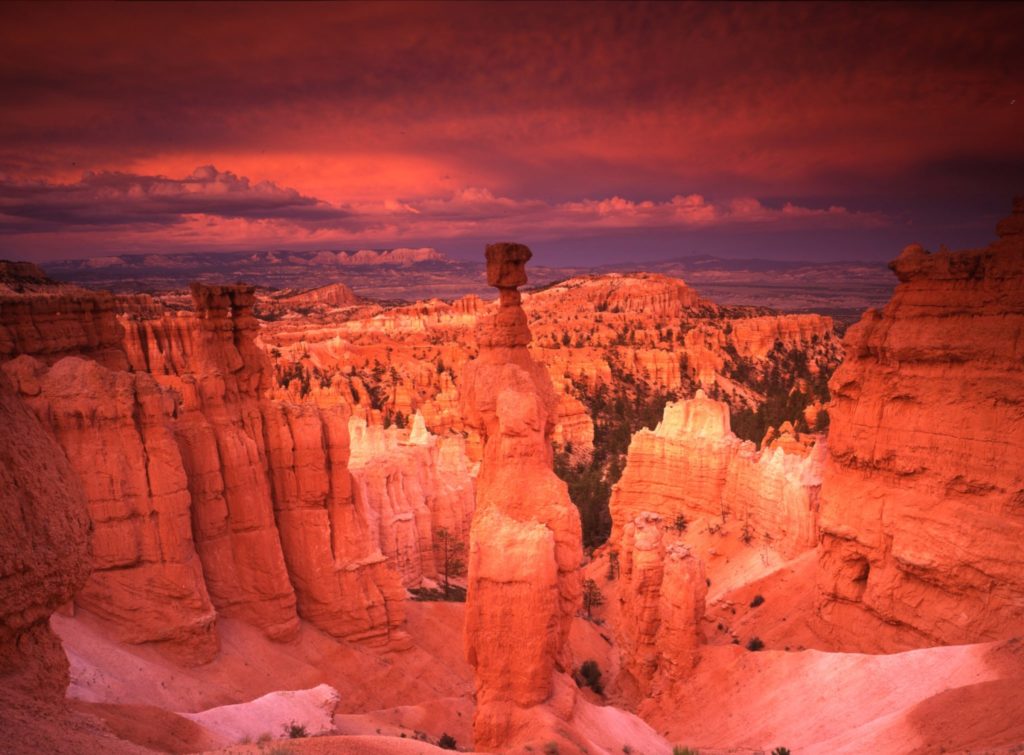
Spring sees sunny days that alternate with gloomy skies and occasional rain. Visitors begin arriving in large numbers in April.
Summer is the busiest season, despite scorching temperatures. During this time, it can be very difficult to find hotel rooms and campsites. Parking areas at popular trailheads and viewpoints can be full, and trails are often crowded. Violent thunderstorms and occasional flash floods occur in summer.
Don’t go in summer!
Fall is the ideal time to visit the region, with the best chance of nice weather. Utah’s national parks remain busy in September and October, but much less so than in summer. Zion Canyon, which is the lowest in elevation and closest to major population centers, gets substantial visitation as late as Thanksgiving.
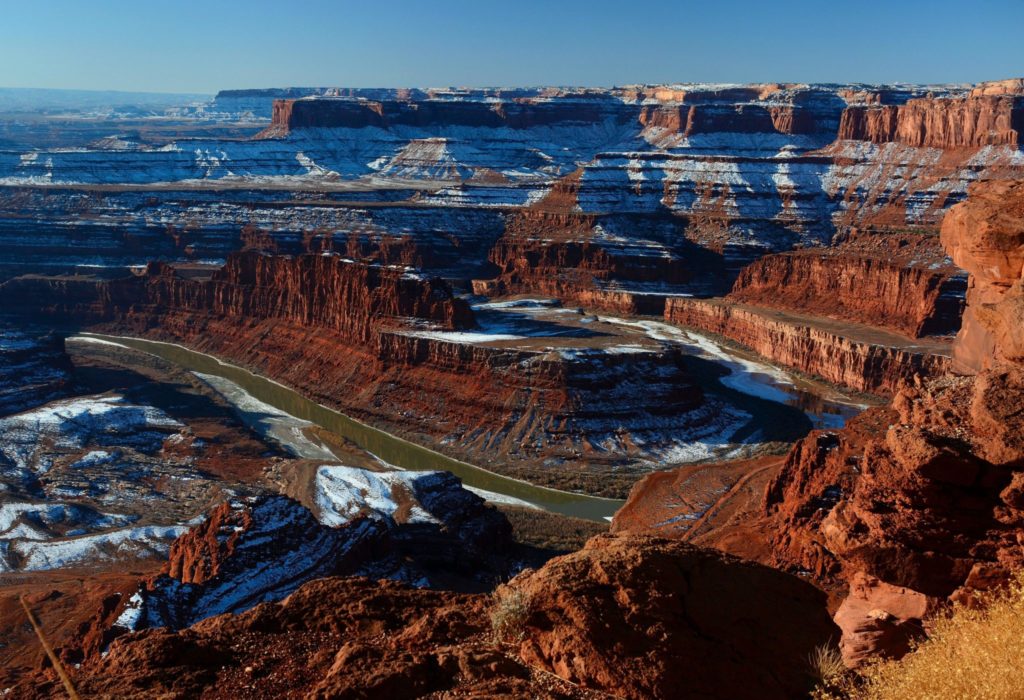
Don’t ignore winter when planning a canyon country trip. The red rock scenery is especially spectacular with a blanket of snow. Highways are plowed, although many trails may be closed and rafting/4/4 tours aren’t operating. While it can be cold, there’s also lots of sunshine. The sky is a deep cobalt blue, visibility is amazing, and conditions for photography are their best.
Winters can be cold, but there’s also lots of sunshine, deep blue skies and amazing visibility. The sun is low in the sky, making for excellent conditions for photography. Some trails, notably those at Bryce Canyon, can be impassable. In spring, sunny days alternate with days that are gray and drizzly.
One parking space for every four vehicles
Back in my travel writer days, I was assigned to the Four Corners region and took a three-week-long trip every year, covering everything from Las Vegas to Santa Fe. The canyon country hadn’t yet become a mainstream tourist destination.
Those days are over.
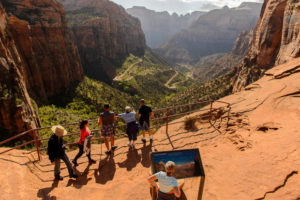
The problem of overcrowding in many national parks is alive and well in the canyon country. The Utah Office of Tourism’s “Mighty Five” promotion has been tremendously successful. Visitation at the state’s national parks increased an average of almost 20 percent in 2016 over the prior year, and the trend is continuing in 2017. Together, Utah’s five parks logged nearly 11 million recreational visits in 2016.
In Zion National Park, the problem is so acute that the National Park Service is considering a plan to require advance reservations for visitors. The National Park Service at Bryce Canyon estimates there are four times more vehicles entering the park than there are parking spaces. On Memorial Day weekend, rangers at Arches National Park had to close the entrance gate when the line of vehicles waiting to enter reached a half mile in length.
If you’re like me and don’t like dealing with hordes of other people at your destination, you’ll avoid mid-May to mid-September. I highly recommend you come between October and March.
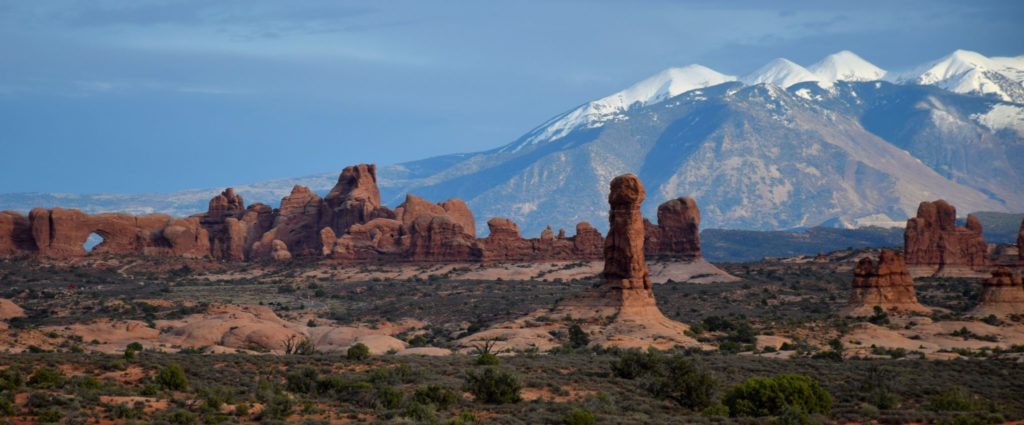
Other considerations
The canyon country is one place where a printed map is highly advisable. The best one available is the Automobile Club of Southern California’s Guide to Indian Country. If you’re a member, you can get one at any Auto Club office. If you belong to another AAA affiliate, ask them to order one for you.
Don’t rely on your cell phone for maps or other services. This is one of the most remote regions in the lower 48, and cell phone reception is spotty at best.
We’re focusing on the five Utah national parks, but there’s a tremendous array of other worthwhile destinations within a reasonable driving distance. These include the Grand Canyon, Monument Valley, Mesa Verde and Lake Powell, just to name a few. If you’re coming from Southern California, you’ll come via Las Vegas. You’ll probably want to allot time for these other enticements.
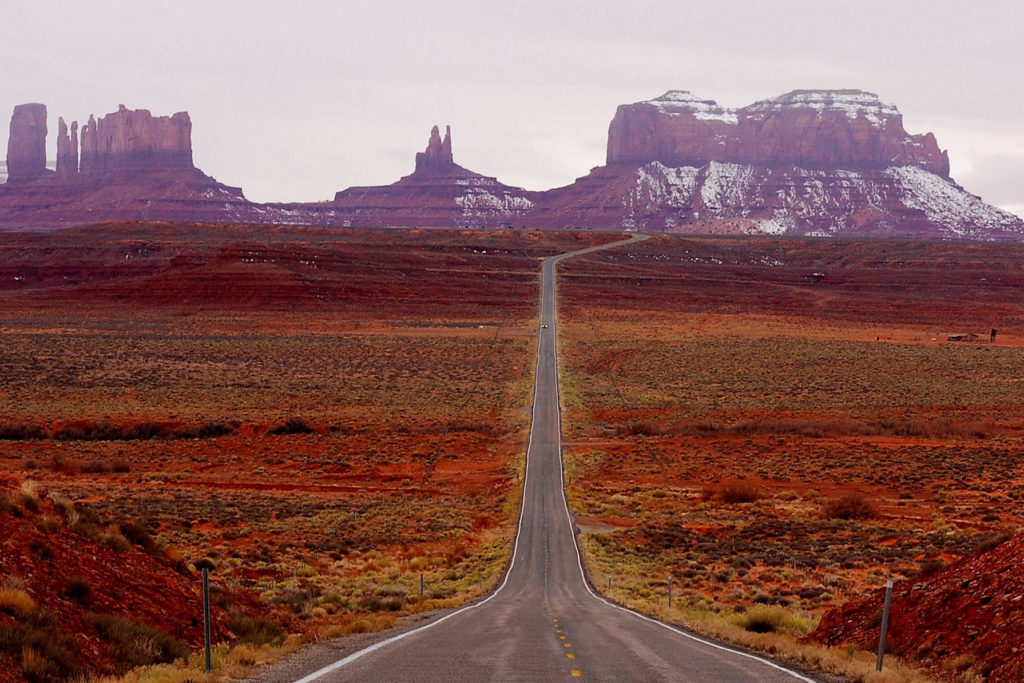
One piece of advice: Don’t try to see everything in a single trip. Doing a quick drive-through isn’t a satisfying way to see a national park. Hike some of the trails, take a guided raft trip or 4×4 tour, attend ranger programs and experience what makes each park special. If your time is limited, better to visit one or two parks than rush through all five.
Make reservations!
I recommend you make advance reservations for accommodations. You don’t want to be driving around looking for a room when you’ve been driving and/or hiking all day.
If you’re camping, you can reserve a space at four of the five Utah parks. Each park’s web site provides details and links for making reservations. At Capitol Reef, sites are first-come, first-served. Arrive early to get one.
Lastly, if you’re flying, I suggest you come via Las Vegas. Flights are frequent, and airfares and rental car rates are reasonable. If you come to the canyon country in winter, you can combine your visit with world class skiing if you fly into Salt Lake City.
Thanks for reading this week’s post. Please return on Monday, January 1, as we focus on Zion and Bryce Canyon National Parks. Meanwhile, I wish you a great holiday season.


